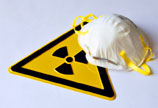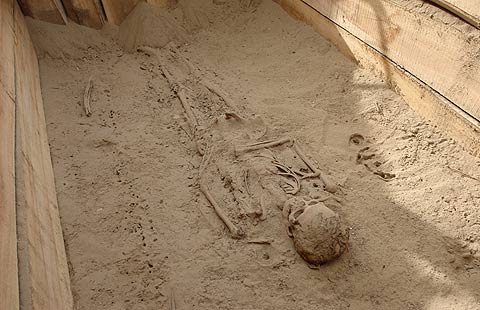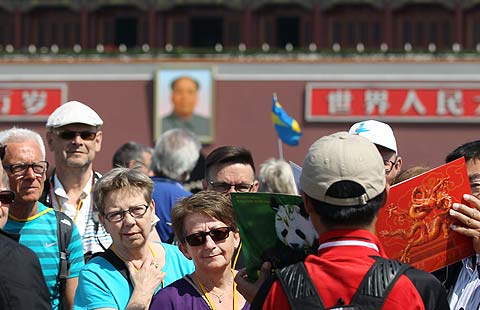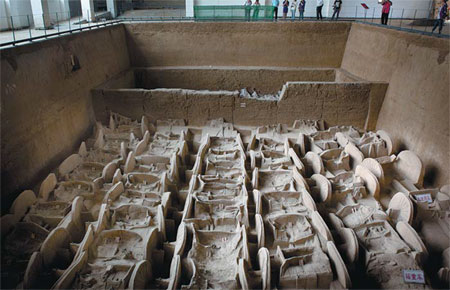Shanxi museum unveils little-known Jin Kingdom
Updated: 2014-06-02 07:14
By Zhang Yue (China Daily)
|
||||||||
A museum for historical relics in Shanxi province will open its doors to the public on Chinese Cultural Heritage Day, which falls on June 14. The museum honors ancient China's Jin Kingdom and will be located in Qu'wo county in Linfen.
It is also the first museum in Shanxi to unveil the history of the Jin Kingdom during the Spring and Autumn Period (770-476 BC).
The Jin Kingdom dates back roughly 3,000 years ago, but questions remain about the kingdom's emergence. It was not until the late 20th century, when Qucun village relics were discovered, that the place was called the birthplace of the Jin Kingdom. Construction of the museum, which is located on the site where the relics were found, began in August 2009. It covers an area of 14.66 hectares, is supported by an investment of 198 million yuan($31.8 million)and is divided into three exhibition halls that feature the history of the Jin State, a chronology of the unearthing of the relics and details about how the relics are protected.
Archeologists began exploring the area in the 1950s when relics and graves related to the Jin Kingdom were discovered. Copper relics, burial accessories and sacrificial pits were discovered from the 1950s to the 1980s.
The museum is surrounded by farmland and provincial roads. Sun Yonghe, head of the museum and the former head of the county's culture relics and tourism bureau, said in the 1980s, as more people learned about the site where the relics were discovered, more and more raiders, most of them nearby farmers, began pilfering from the site. In 1992, grave robbers ignited bombs at the site in an attempt to uncover the treasures.
"Most of the rescue efforts for the site were started after the raiders bombed the site," said Ji Kunzhang, a researcher from the Shanxi Archaeology Institute.
Upon entering the museum are statues of chariots and horses, each 8 meters high. A statue of a monarch of the Jin State is situated in the middle, with four statues of horses in carriages surrounding it.
Visitors will also see more than 1,000 relics from the Jin Kingdom. More than 500 people participated in the excavations of relics over half of a century, with more than 20 excavations carried out during that period.
In the center hall are nine preserved graves of nine Jin emperors. Eight of them were buried with their wives as a funerary object. The relic hall of the museum includes the largest chariot pit in Western Zhou Dynasty (c.11th century-771BC), built 600 years ahead of the Terracotta Warriors.
"Chariot pits discovered here in Qu'wo county include all types of chariots from the Western Zhou Dynasty," said Ji , who participated in excavations during the 1970s. "It also included chariots that are designed for women and children, and it's surprisingly well preserved."
Sun Ruisheng contributed to this story.
zhangyue@chinadaily.com.cn
|
A museum in Linfen, Shanxi province, will open to the public on June 14 and details the history of the Jin Kingdom during the Spring and Autumn Period (770-476 BC). Kuang Linhua / China Daily |
(China Daily 06/02/2014 page10)

 'Taken 2' grabs movie box office crown
'Taken 2' grabs movie box office crown
 Rihanna's 'Diamonds' tops UK pop chart
Rihanna's 'Diamonds' tops UK pop chart
 Fans get look at vintage Rolling Stones
Fans get look at vintage Rolling Stones
 Celebrities attend Power of Women event
Celebrities attend Power of Women event
 Ang Lee breaks 'every rule' to make unlikely new Life of Pi film
Ang Lee breaks 'every rule' to make unlikely new Life of Pi film
 Rihanna almost thrown out of nightclub
Rihanna almost thrown out of nightclub
 'Dark Knight' wins weekend box office
'Dark Knight' wins weekend box office
 'Total Recall' stars gather in Beverly Hills
'Total Recall' stars gather in Beverly Hills
Most Viewed
Editor's Picks

|

|

|

|

|

|
Today's Top News
China Inst. marks 88th with gala
Air China has non-stop Beijing-Washington flight
CCTV exec suspected of bribery
US has to dump containment fantasy
US soldier freed from Taliban
Experts blast Hagel's remarks
Obama's move on carbon perilous
Quake hits Mexico's Pacific coast
US Weekly

|

|









